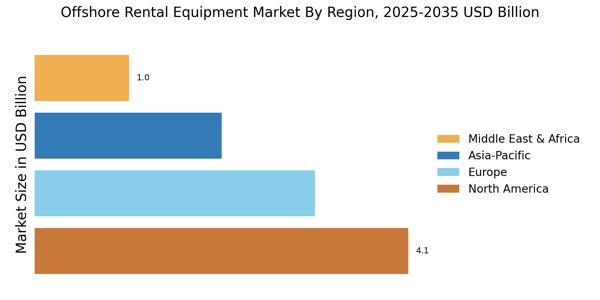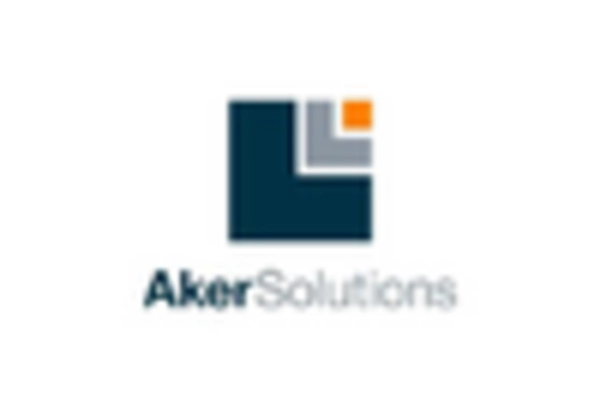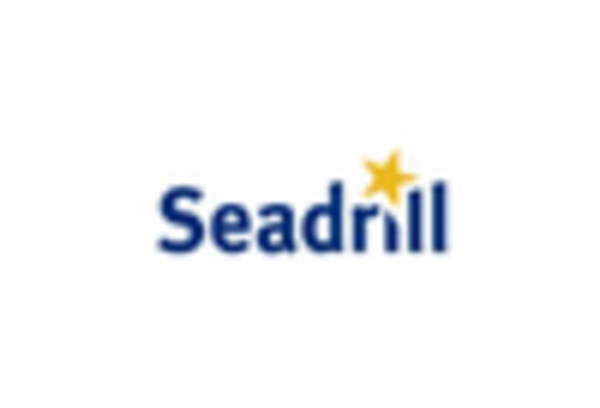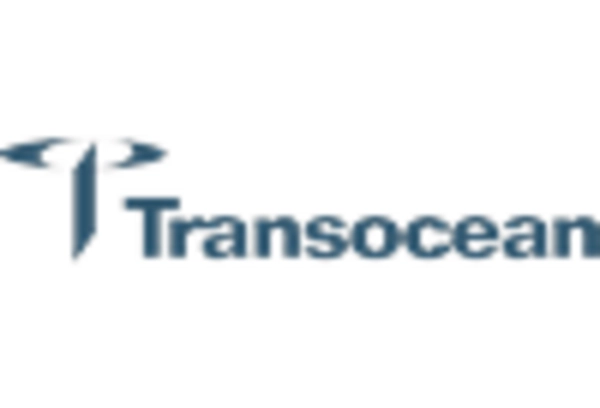Expansion of Oil and Gas Exploration
The Offshore Rental Equipment Market is significantly influenced by the ongoing expansion of oil and gas exploration activities. As energy companies seek to tap into untapped reserves, the demand for offshore drilling rigs, subsea equipment, and support vessels is likely to increase. Recent statistics suggest that offshore oil production is expected to rise by approximately 5% annually over the next five years. This growth is anticipated to create a favorable environment for rental equipment providers, as companies prefer to rent rather than purchase expensive equipment, thereby bolstering the Offshore Rental Equipment Market.
Increasing Demand for Renewable Energy
The Offshore Rental Equipment Market is experiencing a notable surge in demand due to the global shift towards renewable energy sources. As countries invest heavily in offshore wind farms and solar energy projects, the need for specialized rental equipment such as turbines, installation vessels, and support structures has escalated. According to recent data, the offshore wind capacity is projected to reach over 200 GW by 2030, indicating a robust growth trajectory. This trend not only enhances the market for rental equipment but also encourages innovation in equipment design and functionality, thereby driving the Offshore Rental Equipment Market forward.
Technological Innovations in Equipment
Technological advancements are playing a crucial role in shaping the Offshore Rental Equipment Market. Innovations such as automation, remote monitoring, and advanced materials are enhancing the efficiency and safety of offshore operations. For instance, the introduction of remotely operated vehicles (ROVs) and autonomous underwater vehicles (AUVs) has revolutionized subsea inspections and maintenance. These advancements not only reduce operational costs but also minimize environmental impact, making rental equipment more appealing to operators. As technology continues to evolve, the Offshore Rental Equipment Market is likely to witness increased adoption of cutting-edge solutions.
Regulatory Support for Offshore Projects
The Offshore Rental Equipment Market is benefiting from favorable regulatory frameworks that support offshore projects. Governments are increasingly recognizing the economic and environmental benefits of offshore energy production, leading to streamlined permitting processes and incentives for investment. For example, several countries have introduced tax breaks and subsidies for offshore renewable energy projects, which in turn boosts the demand for rental equipment. This supportive regulatory environment is expected to foster growth in the Offshore Rental Equipment Market, as more companies engage in offshore ventures.
Rising Investment in Infrastructure Development
The Offshore Rental Equipment Market is poised for growth due to rising investments in infrastructure development. As nations prioritize the enhancement of their offshore capabilities, there is a corresponding increase in the demand for rental equipment. This includes not only drilling rigs and support vessels but also safety and maintenance equipment. Recent reports indicate that infrastructure spending in offshore projects is projected to exceed USD 100 billion by 2027. Such investments are likely to create a robust market for rental equipment, thereby propelling the Offshore Rental Equipment Market to new heights.


















Leave a Comment